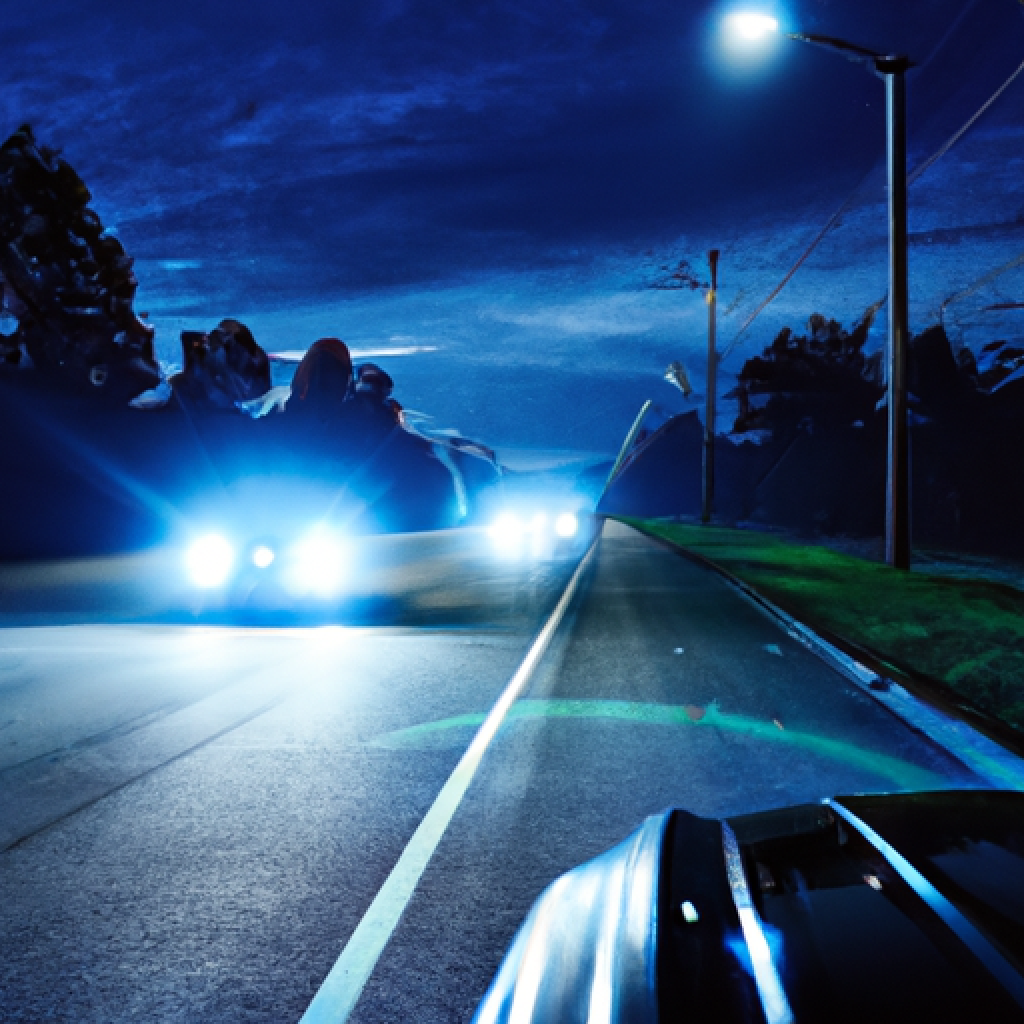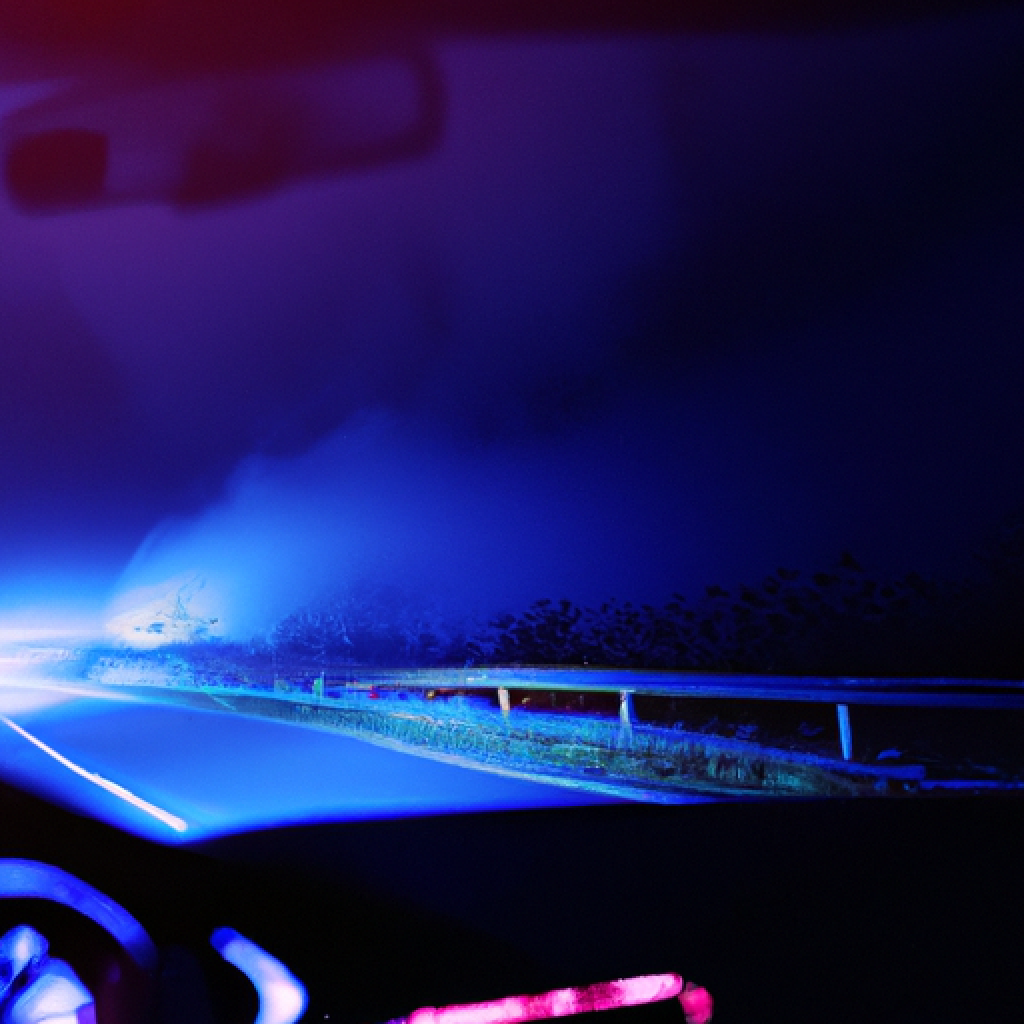Does AR Coating Help With Night Driving?

I’m here to share some insights on whether AR coating actually improves night driving. We’ve all experienced the struggle of driving at night, when our visibility is compromised by glare and reflections from headlights and streetlights. But does adding an anti-reflective (AR) coating to your eyeglasses really make a difference? Let’s explore the effectiveness of AR coating when it comes to enhancing night driving and if it’s worth considering for those late-night journeys.
Understanding AR Coating
Definition of AR Coating
AR (anti-reflective) coating is a thin layer applied to the surface of lenses, glasses, or other optical devices to reduce reflections and glare. It is composed of multiple layers of metal oxides that are designed to interfere with the reflection of light, allowing more light to pass through the lens and reach the wearer’s eyes.
How AR Coating Works
When light hits a lens without AR coating, a portion of the light is reflected off the surface, creating glare and reducing the amount of light that reaches the eyes. AR coating works by reducing these reflections through a process called interference. The multiple layers of metal oxides in the coating are carefully designed to have different refractive indices, which means that each layer will reflect light differently. These reflections interfere with each other and cancel each other out, resulting in significantly reduced glare.
Standard Applications of AR Coating
AR coating is commonly used in various optical devices, including eyeglasses, sunglasses, camera lenses, and even computer screens. Its primary purpose is to improve visual clarity by reducing reflections and increasing light transmission. By minimizing glare, AR coating enhances the wearer’s vision, especially in challenging lighting conditions such as bright sunlight or nighttime driving.
Advent of AR Coating in Eyewear
The use of AR coating in eyewear has revolutionized the way people see the world, particularly during night driving. In the past, drivers often struggled with reduced visibility due to glare from oncoming headlights or streetlights. However, with the advent of AR coating in eyewear, these issues have been significantly alleviated. The application of AR coating to lenses used for nighttime driving has proven to be a game-changer, enhancing visual acuity and reducing the dangers associated with poor visibility on the road.
Science of Night Driving
Challenges of Night Driving
Night driving presents several challenges that can impact a driver’s ability to navigate safely on the road. Reduced light levels, an increase in potential hazards, and the difficulty of detecting objects in low-light conditions can all contribute to the dangers of nighttime driving. One of the most significant challenges is the presence of glare from headlights, streetlights, and other sources, which can impair visibility and cause discomfort for drivers.
Role of Human Eye During Night Driving
The human eye functions differently under low-light conditions compared to well-lit environments. The eye relies on light to form clear and detailed images, but at night, the available light is often limited. This causes the eye to adjust by dilating the pupil and relying more on peripheral vision. However, this adaptation can reduce visual acuity and increase the susceptibility to glare.
Understanding Glare and Its Effects During Night Driving
Glare occurs when bright light sources, such as oncoming headlights, directly enter the driver’s field of vision. This excessive amount of light can create a veil-like effect, obscuring the driver’s ability to see clearly. Glare not only makes objects appear less distinct but also causes discomfort and visual fatigue, making it harder for drivers to maintain focus and react to potential hazards on the road.
Difficulties Caused by Headlights During Night Driving
One of the primary sources of glare during night driving is the intense beams of headlights from oncoming vehicles. The brightness and intensity of these headlights can momentarily blind a driver, impairing their vision and reaction time. Moreover, some modern car headlights, such as xenon or LED lights, emit a bluish-white light that is more difficult to filter out and can be particularly bothersome to drivers.

AR Coating and Night Driving
How AR Coating Impacts Night Driving
The application of AR coating to eyewear has proven to be highly beneficial for night driving. By reducing reflections and glare, AR coating enhances a driver’s ability to see clearly, even in the presence of bright headlights or streetlights. The coating works by allowing more light to pass through the lenses while simultaneously reducing the light that is reflected off their surface. This results in improved visibility and a reduction in visual discomfort caused by glare.
Studies and Evidence Supporting Benefits of AR Coating for Night Driving
Multiple studies have demonstrated the advantages of AR coating for night driving. Research has shown that AR-coated lenses significantly reduce glare and improve contrast sensitivity, allowing drivers to see objects more clearly and react more quickly to potential hazards. Additionally, subjects wearing AR-coated lenses reported a reduction in visual fatigue and an overall improvement in their night driving experience.
Benefits of AR Coating for Night Driving
Reduction of Glare
One of the primary benefits of AR coating for night driving is the significant reduction of glare caused by bright headlights and other light sources. By minimizing reflections on the lens surface, AR coating helps drivers maintain clear vision even when faced with intense light. The reduction of glare not only improves visual comfort but also enhances the ability to see and recognize objects on the road.
Enhanced Contrasts
AR coating enhances contrasts, making it easier for drivers to distinguish between various objects and their surroundings. This increased contrast sensitivity is especially valuable during nighttime driving when reduced light levels can make objects blend into the background. By improving the perception of depth and detail, AR-coated lenses enable drivers to better judge distances and react more effectively to potential obstacles.
Improved Visibility
The improved visibility provided by AR-coated lenses is a significant advantage for night driving. Not only does the coating reduce glare and enhance contrasts, but it also allows more light to reach the driver’s eyes. By maximizing light transmission, AR coating ensures that drivers have the best possible visibility, even in challenging low-light conditions.
Reduced Eye Strain
Night driving, especially in the presence of glare, can cause significant eye strain and fatigue. AR coating reduces the amount of light that enters the eye, making it more comfortable for drivers to focus on the road. By minimizing visual discomfort, the coating helps alleviate eye strain and allows drivers to maintain their concentration for extended periods.

Comparisons of Various Types of AR Coatings for Night Driving
Different Types of AR Coatings Available
There are several types of AR coatings available in the market, each offering unique features and benefits. Some of the commonly used AR coatings include single-layer, multi-layer, hydrophobic, and oleophobic coatings. Each type has its own composition and technology that determine its specific performance characteristics.
Advantages and Disadvantages of Each Type
-
Single-Layer AR Coating: This type of coating consists of a single layer of metal oxide and is relatively simple to apply. It provides a basic reduction in reflections and improves light transmission. However, single-layer coatings may not be as effective in reducing glare as their multi-layer counterparts.
-
Multi-Layer AR Coating: Multi-layer coatings utilize a more complex structure with multiple layers of metal oxides. This allows for better control of reflections and greater reduction of glare. The multi-layer coating provides superior visual clarity and is commonly used in high-quality AR-coated lenses.
-
Hydrophobic Coating: Hydrophobic coatings add a water-repellent layer to the lens, making it easier to clean and resistant to smudges or fingerprints. This type of coating is beneficial for those who want to minimize maintenance and keep their lenses clean.
-
Oleophobic Coating: Oleophobic coatings offer similar benefits to hydrophobic coatings but are specifically designed to repel oils and grease. These coatings are ideal for individuals working in environments where the lenses may come into contact with oily substances.
Which Type Is the Most Suitable for Night Driving?
For night driving, a multi-layer AR coating is generally recommended due to its superior glare reduction and enhanced visual clarity. This type of coating is specifically designed to minimize reflections and provide optimal visual comfort in low-light conditions. Adding a hydrophobic or oleophobic coating can further enhance the durability and cleanliness of the lenses, ensuring a clear view during night driving.
Importance of High-Quality AR Coating
How Quality Affects Performance
The quality of AR coating plays a crucial role in its overall performance. High-quality coatings are designed with precision and utilize advanced technologies to achieve excellent optical properties. These coatings are more effective in reducing reflections, enhancing light transmission, and providing superior visual clarity. In contrast, low-quality coatings may not deliver the desired benefits and can potentially compromise vision quality.
Choosing the Right Quality of AR Coating
When selecting AR-coated lenses for night driving, it is essential to opt for high-quality coatings to maximize the desired benefits. Trusted optical manufacturers and reputable eyewear brands often prioritize the use of high-quality AR coatings to ensure optimal performance. Consulting with an experienced optician or eyewear professional can help in choosing the right quality AR coating that suits individual needs and preferences.
Dangers of Subpar AR Coating
Subpar or low-quality AR coatings may not effectively reduce reflections and can even introduce visual distortions. This can be particularly detrimental during night driving, where the visibility is already compromised. Inferior coatings may also wear off more quickly or become damaged, leading to reduced performance over time. Investing in a high-quality AR coating ensures better visibility, safer driving, and long-term durability.

Potential Drawbacks of AR Coating
Possible Side Effects
While AR coating offers numerous benefits, it is essential to consider potential side effects or drawbacks. Some individuals may experience visual aberrations, such as halos or starbursts around light sources, particularly in low-light conditions. These effects may occur due to the physics of interference patterns created by the coating layers. However, it is important to note that the occurrence and severity of these side effects can vary among individuals.
Who Shouldn’t Use AR Coating?
In general, most individuals can benefit from AR coating for night driving. However, those who already have a high level of visual aberrations or experience discomfort due to glare may find the side effects of AR coating more pronounced. Consulting with an eye care professional can help determine whether AR coating is suitable for individual needs and address any concerns or specific requirements.
Maintenance and Durability Issues
While AR coatings are designed to be durable and long-lasting, they may require proper care and maintenance to ensure their effectiveness. Cleaning the lenses with appropriate non-abrasive solutions and avoiding rough handling can help prevent damage to the coating. It is also important to follow the manufacturer’s instructions for maintenance to avoid any premature degradation or reduction in performance.
Lens Options to Pair with AR Coating for Night Driving
Photochromic Lenses
Photochromic lenses, commonly known as transitional lenses, are designed to automatically adjust their tint based on the amount of available light. These lenses darken in response to UV exposure, providing protection from bright sunlight during the day. For night driving, photochromic lenses can be paired with AR coating to provide suitable light transmission and reduce glare effectively.
Polarized Lenses
Polarized lenses are specifically designed to reduce glare by blocking horizontally polarized light. While they are primarily used to enhance vision in bright daylight conditions, they can also be beneficial for night driving. When paired with AR coating, polarized lenses can further enhance visual clarity and reduce glare from various light sources, making them a popular choice for nighttime eyewear.
Yellow-Tinted Lenses
Yellow-tinted lenses are known to increase contrast and enhance vision in low-light conditions. These lenses absorb scattered blue light, which can cause visual discomfort and reduce visual acuity. When combined with AR coating, yellow-tinted lenses provide improved visibility, reduced glare, and enhanced depth perception, making them suitable for night driving.

Consumer Testimonials and Experiences with AR Coating
Real Life Experiences Shared by Night Drivers
Many individuals who have used AR-coated lenses for night driving have reported significant improvements in their overall experience. These drivers have expressed a reduction in glare, enhanced visibility, and improved comfort during nighttime journeys. The AR coating has allowed them to see the road more clearly, react faster to potential hazards, and feel more confident while driving at night.
Professional Drivers’ Input on AR Coating
Professional drivers, such as taxi drivers, truck drivers, or chauffeurs who spend a significant amount of time on the road at night, often rely on AR-coated lenses to ensure their safety and performance. These drivers have praised the benefits of AR coatings, emphasizing the reduction in glare, improved visibility, and enhanced visual comfort. They firmly believe that AR coating is a valuable tool for night driving, enabling them to perform their duties effectively and safely.
General Feedback from Consumers
In general, consumers who have used AR-coated lenses for night driving have reported positive experiences and improvements in their nighttime visibility. Many have expressed satisfaction with the reduction in glare and enhanced clarity offered by AR coating. However, individual experiences may vary, and it is important to consult with an optician or eyewear professional to assess specific needs and determine the best solution for each person.
Does the AR Coating on Glasses Need to be Reapplied Over Time?
The length of ar coating durability on glasses depends on various factors, such as usage and maintenance. In general, AR coatings are designed to last for a significant period, reducing reflections and improving visual clarity. However, over time, wear and tear can weaken the coating, leading to a decreased performance. Hence, there may be a need for reapplying AR coatings to maintain the desired effectiveness of the glasses.
Key Takeaways and Conclusion
Rounding up the Benefits and Drawbacks
AR coating has proven to be highly beneficial for night driving, offering advantages such as reduced glare, enhanced contrasts, improved visibility, and reduced eye strain. However, it is important to consider potential side effects, maintenance requirements, and personal suitability when choosing AR-coated lenses.
Personalizing the Decision Based on Driving Habits and Vision Needs
Selecting whether to use AR coating for night driving is a personal decision that should take into account individual driving habits, vision needs, and preference for lens options. Consulting with an eye care professional can provide guidance and ensure that the chosen solution aligns with specific requirements.
Final Verdict on Using AR Coating for Night Driving
In conclusion, AR coating can significantly improve the visual experience and safety of night driving. Its ability to reduce glare and enhance visibility makes it a valuable addition to eyewear for those who frequently drive in low-light conditions. By carefully considering the different types of AR coatings, opting for high-quality options, and pairing them with suitable lens options, individuals can enjoy the benefits of AR coating while minimizing any potential drawbacks.








